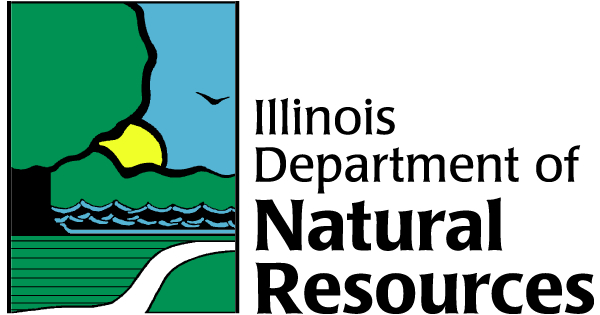AML Program
More About the AML Program
The Department of Natural Resources, Office of Mines and Minerals, Abandoned Mined Land Reclamation Division, operates the AML program in Illinois. Funding for the reclamation program is provided by a special production fee on active coal mining. The OSMRE collects these fees on a per ton basis and returns the money to the state in the form of reclamation grants.
To date, the Illinois AML program has completed over 550 projects, addressed more than 775 mine sites and reclaimed nearly 9,400 acres of land in Illinois, at a cost of approximately 146 million dollars. 1,236 mine openings have been sealed, 907 hazardous tipple structures remouved, 5,850 acres of gob and slurry and 1,900 acres of spoil stabilized, and 1,400 acres of affected land and water restored.
Reclamation Priority: Federal law requires that reclamation projects be accomplished in accordance with program guidelines and the priority of hazard and/or environmental problems presented. Sites that pose a threat to public health or safety, such as improperly sealed shafts receive top funding priority.
Project Construction: Reclamation projects are designed by the AMLRD staff or by qualified engineering consultants. Construction is performed by independent contractors selected through a bidding process. The Illinois Department of Natural Resources contracts directly with all consultants and contractors. Landowners are neither responsible for any costs, nor do they receive any direct compensation for the reclamation work performed on their property.
Management: After reclamation, sites or portions of sites often remain sensitive and can be easily damaged. AMLRD staff will recommend land use prior to beginning a reclamation project. Once the project is completed and the site is revegetated, the landowner becomes responsible for managing and protecting the sites.
Accomplishments
Illinois became one of the first states to take responsibility for the AML Emergency Program in June 1984. Since that time, Illinois has completed 225 emergency projects at a total cost of $3.5 million. Problems addressed by the program include subsidence, shaft failures, mine fires, gas leaks, and landslides. Illinois has been diligent in employing low cost solutions to the majority of problems which they address. Approximately 90% of the problems were subsidence and shaft failures which account for 48% of all construction expenditures. Three of the subsidence and shaft projects however, accounted for 22% of the expenditures on these problems. One project, the Benton Gas Leak, which was completed in 1987 accounted for 45% of the total expenditures. This project involved the sealing of two improperly filled shafts located within a residential subdivision which began leaking high concentration methane gas.
Prior to the State's assuming the emergency program, OSM abated 51 emergency problems at a cost of over $1.5 million. As with the State emergency program, these were mostly low cost projects, namely, mine subsidence abatement (35 projects), and open mine shaft closures (9 projects). However, two large, relatively high cost projects were addressed: the Paxson-Wargo Subsidence Project in Streator, Illinois at a cost of $395,797 and the Elam Pit Subsidence Project in Fairview Heights, Illinois costing $352,000.
Since the non-emergency AML Reclamation Program was approved in 1982, Illinois has completed 577 high priority projects at a cost of over $123.5 million. Abatement of high priority hazards included the sealing of 1,082 mine openings, removal of 558 mine structures, and addressing over 48,175 feet of hazardous highwalls. Other hazards abated included dangerous piles and embankments, refuse fires, mine gas leaks, and flooding problems due to clogged streams. In addition, Illinois has reclaimed approximately 4,033 acres of gob, 914 acres of slurry 1,650 acres of spoil, 604 acres of impounded acid water, and 795 acres of unmined lands adversely affected by mining. Among the more unique reclamation projects were the Kickapoo State Park Project, which was completed in 1997, and the Will Scarlet Project which covers over 500 acres and has been an ongoing, involving many phases over the past 10 years. The Kickapoo State Park Project included adverse affects of both underground and surface mining, which affected the only nationally designated scenic river in Illinois. The Will Scarlet site was featured on the 60 Minutes TV Program years ago as one of the worst AMD sites in the nation. Will Scarlet is being addressed under a cooperative agreement with Peabody Coal Company.
Illinois estimates that just over 7,780 acres of eligible lands and waters containing significant problem features remain in the State and are in need of reclamation.
Illinois Abandoned Mine Land (AML) Site Locations
The AML Division assesses abandoned mine lands for reclamation throughout the state. When an abandoned mine features a problem that qualifies for reclamation it is inventoried according to eminent harm to public safety, environmental safety, etc. and ranked from high to low priority. To see if an abandoned mine problem has been inventoried in your area please go to Illinois Coal Mine Permits Map Tool. If you have any questions regarding the search you can e-mail AML staff or phone them at 217-782-6791.
In the event of an emergency, the AMLRD can be reached at 618-650-3197 or 217-782-6791. If the situation requires immediate attention after business hours, contact the Illinois emergency Management Agency @ 800-782-7860.


